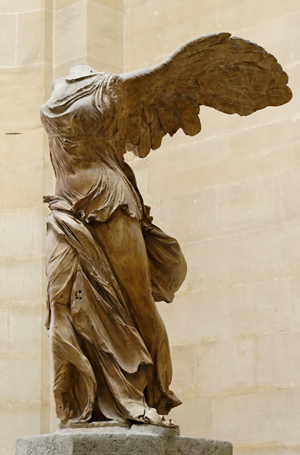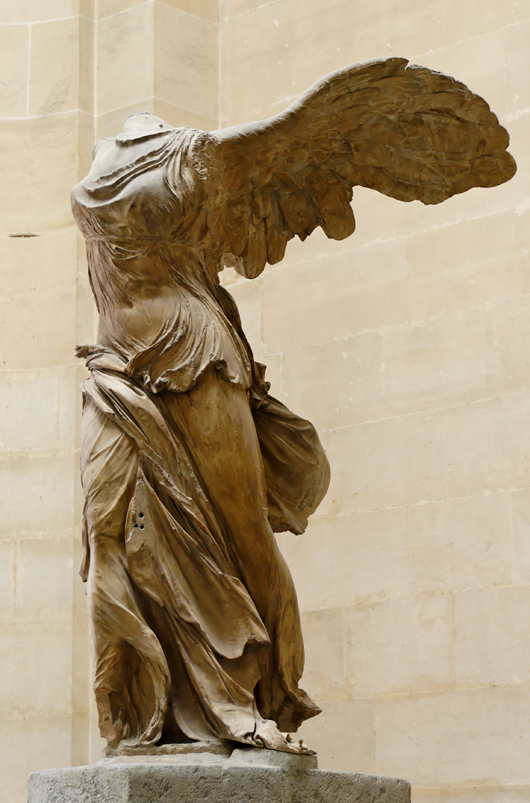
PARIS (AP) – Winged Victory of Samothrace, the hulking Hellenistic sculpture that dominates the Louvre Museum’s most frequented staircase, is taking flight—away from tourists’ gazes for a restoration project.
Officials at the famed Paris museum said the 2nd-century B.C. sculpture was set to be dismantled, hoisted onto rollers and wheeled into a closed cabin in another Louvre gallery for structural work and a meticulous cleaning to restore the original hues to its marble over the next nine months.
The 18-foot-tall sculpture shows the headless, armless remains of the winged Greek goddess of victory, Nike, as she lands on a ship’s bow atop a flat base. The work’s flowing garments, energized pose with right leg extended and outstretched wings point to an expert rendering in the high-quality Paros marble, which has yellowed with time, Louvre officials said.
The sculpture towers over the Louvre’s Daru staircase—which leads museum-goers to the Mona Lisa—and is also being refurbished: Visitors will see scaffolding. The 4 million-euro ($5.27 million) project, which will take Winged Victory out of visitors’ sight until June, follows three years after another Louvre masterpiece, the Venus de Milo, was touched up.
On Tuesday, the Louvre’s weekly closing day, work crews erected scaffolding and bustled on the statue’s base as the project got under way.
“For specialists in Greek sculpture, it’s an essential work … It immediately draws attention,” Ludovic Laugier, a Louvre restoration official, told reporters. Studies conducted beforehand to plan for the restoration made one thing clear, he said.
“We quickly realized that we were faced with a major difficulty: This staircase gets so much traffic, we can’t restore the Winged Victory here, because we would block all the space,” he said, motioning to the vaulted, cavernous stairwell, which is vital to the movement of many of the Louvre’s 7 million visitors each year.
The statue, by an unknown sculptor, was discovered in 1863 by a French diplomat, Charles Champoiseau, on the Greek island of Samothrace in the Aegean Sea. The last of four restorations ended in 1934, though the so-called great restoration—including use of plaster that Laugier said is accepted by experts today—took place in the early 1880s.
Copyright 2013 Associated Press. All rights reserved. This material may not be published, broadcast, rewritten, or redistributed.
AP-WF-09-03-13 2348GMT
ADDITIONAL IMAGE OF NOTE


